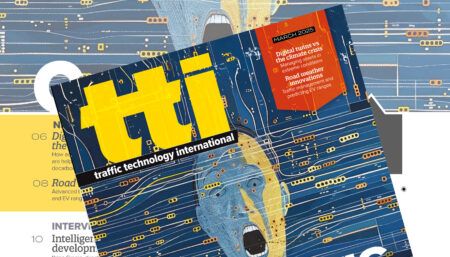Canadian traffic technology developer Miovision has unveiled the ‘World’s Smartest Intersection’ in the City of Detroit, with the groundbreaking system being showcased at the ITS America Annual Meeting and Expo that is currently taking place in the city (June 5-7).
Miovision’s World’s Smartest Intersection is a system of sensors, video-based detection, connected traffic signals, and remote monitoring capabilities, which has been deployed at five intersections along a busy corridor in the heart of Detroit. With a focus on safety, the system generates data that pinpoints areas where traffic-related fatalities and injuries can be reduced. Cities can then use this type of data to advance their Vision Zero goals of eliminating deaths and serious injuries involving road traffic. The technology behind the World’s Smartest Intersection is a combination of hardware and software based on open architecture and artificial intelligence (AI).
The World’s Smartest Intersection uses smart traffic technology from Miovision that is now being deployed in over 40% of the intersections in Detroit. Using this foundational technology, the intersections are able to sense and understand what is happening on the roadways in real-time, and trigger responses, such as:
• Traffic signals that can extend green lights to accommodate cyclists who would not otherwise be able to make it through the intersection;
• Alerts that warn drivers of connected cars or Waze users that jaywalkers are ahead;
• Traffic lights that provide priority access to emergency vehicles;
• Intersections that understand and analyze the near misses between road users such as pedestrians, cyclists and drivers;
• Traffic signals that allow for goods vehicles to have green light priority, encouraging freight use on certain intersections away from pedestrian-heavy corridors.
Miovision worked closely with Sunny Jacob, head of Detroit’s traffic operations department, as it was developing the technology. While it was initially deployed to help the traffic operations team remotely monitor and manage intersections, the technology is now being used by the entire city to analyze and improve the performance of intersections. “We have already seen significant improvements in traffic flow,” said Jacob. “Understanding where signal timing could be improved has reduced travel times by more than 30% where the technology has been deployed.”
Other city departments have also started to benefit from the Miovision-powered smart intersections. Detroit Public Safety was able to integrate existing emergency vehicle tracking units with traffic lights to ensure the vehicles were given green lights. In early tests, emergency vehicle preemption (EVP) has improved emergency response times by almost 20%. This integration required no additional investment in hardware or communications because they were using technology already in place. This additional benefit was made possible because the intersections are built on open architecture.
Mark de la Vergne, Detroit’s chief of mobility innovation, commented, “This corridor is a great example of how cities can leverage existing infrastructure to build innovative solutions that immediately benefit people. We started with the goal of improving how we monitor our traffic signals, and now we’re working with Miovision to explore how to improve safety for pedestrians and help first responders get to emergencies more quickly. Miovision’s open technology means that we will be able to continue to add new applications to the network, and leverage the data we’re collecting to make more improvements that benefit our residents.”




